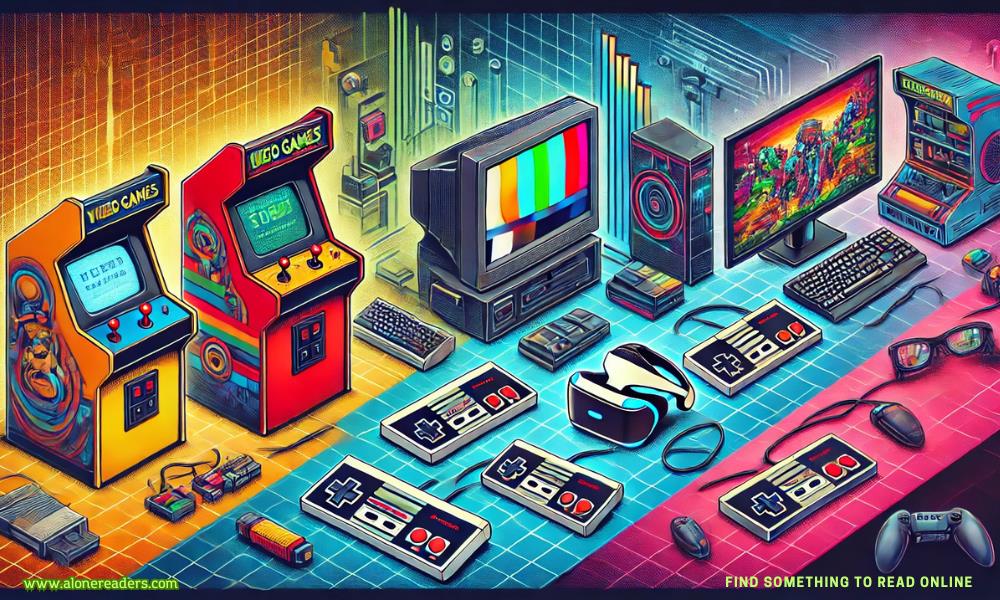
Video games have become an integral part of modern culture, offering immersive entertainment that captivates billions worldwide. However, the journey to today's advanced, hyper-realistic games has been long and storied. From simple pixelated games on arcade machines to expansive, photorealistic virtual universes, the evolution of video games is a testament to human ingenuity and technological progress. This article takes you on a journey through the history of video games, highlighting key milestones and innovations.
The roots of video gaming trace back to the 1950s and 1960s when computer scientists began experimenting with interactive entertainment. One of the earliest examples is Tennis for Two (1958), a simple game created by physicist William Higinbotham. It featured basic two-dimensional graphics displayed on an oscilloscope.
In 1972, the gaming industry took its first major leap with the release of Pong by Atari. Created by Nolan Bushnell, Pong was a two-player table tennis game and became a cultural phenomenon. It established video games as a mainstream form of entertainment and laid the foundation for the arcade gaming industry.
The 1980s marked the golden age of arcade gaming, with iconic titles like Pac-Man, Donkey Kong, and Space Invaders dominating the market. These games introduced vibrant graphics, engaging soundtracks, and addictive gameplay. Players would gather in arcades, fostering a communal gaming culture.
During this era, video game consoles also emerged. Companies like Nintendo and Sega launched systems like the NES (Nintendo Entertainment System) and Sega Genesis. These consoles brought arcade-quality games to living rooms, revolutionizing the way people experienced video games.
The 1990s witnessed a technological revolution in gaming, driven by advancements in hardware and software. This period saw the transition from 8-bit to 16-bit graphics, offering more detailed and colorful visuals. Nintendo's Super Mario World and Sega's Sonic the Hedgehog became flagship titles for their respective consoles.
Sony entered the gaming market with the release of the PlayStation in 1994. This console utilized CD-ROM technology, allowing developers to create larger, more complex games. Titles like Final Fantasy VII and Resident Evil showcased cinematic storytelling, elevating gaming to a new artistic medium.
Additionally, the emergence of handheld consoles, such as the Game Boy, made gaming portable. Iconic titles like Pokémon Red and Blue captured the imagination of millions and solidified handheld gaming as a viable platform.
The 2000s brought the rise of online gaming, fueled by the advent of broadband internet. Consoles like the Xbox and PlayStation 2 introduced online capabilities, enabling players to connect and compete globally. Microsoft's Xbox Live service set the standard for online gaming, offering features like multiplayer matchmaking and digital downloads.
Massively Multiplayer Online Role-Playing Games (MMORPGs) like World of Warcraft created vast virtual worlds where players could interact, collaborate, and embark on epic quests. These games fostered vibrant online communities and demonstrated the social potential of gaming.
Graphics technology continued to evolve, with consoles like the PlayStation 3 and Xbox 360 delivering high-definition visuals. Games like Halo 3 and The Elder Scrolls V: Skyrim showcased sprawling worlds and realistic characters, blurring the line between reality and fiction.
The 2010s saw the explosion of mobile gaming, driven by the widespread adoption of smartphones. Games like Angry Birds, Candy Crush Saga, and Pokémon GO introduced gaming to a broader audience, including casual players who had never owned a console.
Social media platforms also became hubs for gaming, with titles like FarmVille and Words with Friends integrating seamlessly into users' daily lives. These games emphasized accessibility and social interaction, making gaming a ubiquitous pastime.
Meanwhile, traditional gaming platforms continued to innovate. The PlayStation 4 and Xbox One brought even greater graphical fidelity and introduced features like game streaming and virtual reality support. The Nintendo Switch bridged the gap between home and portable gaming, offering versatility and unique experiences.
Today, video games are more diverse and sophisticated than ever. Virtual Reality (VR) and Augmented Reality (AR) technologies are pushing the boundaries of immersion. Devices like the Oculus Rift, PlayStation VR, and Microsoft HoloLens allow players to step into digital worlds and interact with them in unprecedented ways.
Esports has emerged as a global phenomenon, with professional gamers competing in tournaments for millions of dollars in prizes. Games like League of Legends and Fortnite have transformed competitive gaming into a spectator sport, attracting massive audiences both online and in arenas.
The gaming industry is also exploring cloud gaming, enabling players to stream games directly to their devices without the need for powerful hardware. Platforms like Google Stadia, NVIDIA GeForce Now, and Xbox Cloud Gaming are making high-quality gaming more accessible.
The evolution of video games has had a profound impact on culture, shaping how we tell stories, interact, and even think. Games are now recognized as an art form, with titles like The Last of Us and Journey receiving critical acclaim for their emotional depth and storytelling.
Looking ahead, the future of gaming promises even greater innovations. Artificial intelligence, blockchain technology, and advancements in graphics rendering are set to redefine the gaming experience. As technology continues to evolve, so too will the ways in which we play and connect through games.
Conclusion
The journey of video games from rudimentary experiments to immersive, interactive worlds is a testament to the limitless possibilities of human creativity and technology. Each era has brought new innovations, shaping the industry and captivating generations of players. As gaming continues to evolve, it remains a dynamic and exciting medium that bridges entertainment, art, and technology.
Whether you're a fan of retro arcade classics or cutting-edge virtual reality experiences, video games offer something for everyone. Their evolution is not just a story of technological progress but a reflection of our collective imagination and desire to play.